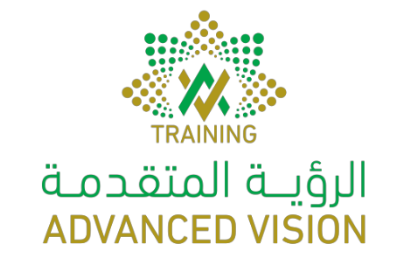Microsoft Certified: Azure Developer Associate
This certification ensures that you have a solid understanding of various topics in the quickly expanding cybersecurity sector, regardless of whether you're a student, business user, or IT professional. If you want to go on to role-based certifications in security operations, identity and access management, and information protection, this fundamentals certification can serve as your first step.
Course Info
Earning this certification will validate you are able to:
- Creating Azure app service web apps
- Developing solutions for Azure IaaS and PaaS
- Deploying Azure security and access control
- Monitoring and optimizing Azure solutions
- Deploying the API gateway and third-party services
1 - Explore Azure App Service
- Examine Azure App Service
- Examine Azure App Service plans
- Deploy to App Service
- Explore authentication and authorization in App Service
- Discover App Service networking features
2 - Configure web app settings
- Configure application settings
- Configure general settings
- Configure path mappings
- Enable diagnostic logging
- Configure security certificates
3 - Scale apps in Azure App Service
- Examine auto scale factors
- Identify auto scale factors
- Enable auto scale in App Service
- Explore auto scale best practices
4 - Explore Azure App Service deployment slots
- Explore staging environments
- Examine slot swapping
- Swap deployment slots
- Route traffic in App Service
5 - Explore Azure Functions
- Discover Azure Functions
- Compare Azure Functions hosting options
- Scale Azure Functions
6 - Develop Azure Functions
- Explore Azure Functions development
- Create triggers and bindings
- Connect functions to Azure services
7 - Explore Azure Blob storage
- Explore Azure Blob storage
- Discover Azure Blob storage resource types
- Explore Azure Storage security features
- Discover static website hosting in Azure Storage
8 - Manage the Azure Blob storage lifecycle
- Explore the Azure Blob storage lifecycle
- Discover Blob storage lifecycle policies
- Implement Blob storage lifecycle policies
- Rehydrate blob data from the archive tier
9 - Work with Azure Blob storage
- Explore Azure Blob storage client library
- Create a client object
- Manage container properties and metadata by using .NET
- Set and retrieve properties and metadata for blob resources by using REST
10 - Explore Azure Cosmos DB
- Identify key benefits of Azure Cosmos DB
- Explore the resource hierarchy
- Explore consistency levels
- Choose the right consistency level
- Explore supported APIs
- Discover request units
11 - Work with Azure Cosmos DB
- Explore Microsoft .NET SDK v3 for Azure Cosmos DB
- Create stored procedures
- Create triggers and user-defined functions
- Explore change feed in Azure Cosmos DB
12 - Manage container images in Azure Container Registry
- Discover the Azure Container Registry
- Explore storage capabilities
- Build and manage containers with tasks
- Explore elements of a Docker file
13 - Run container images in Azure Container Instances
- Explore Azure Container Instances
- Run containerized tasks with restart policies
- Set environment variables in container instances
- Mount an Azure file share in Azure Container Instances
14 - Implement Azure Container Apps
- Explore Azure Container Apps
- Explore containers in Azure Container Apps
- Implement authentication and authorization in Azure Container Apps
- Manage revisions and secrets in Azure Container Apps
- Explore Dapr integration with Azure Container Apps
15 - Explore the Microsoft identity platform
- Explore the Microsoft identity platform
- Explore service principals
- Discover permissions and consent
- Discover conditional access
16 - Implement authentication by using the Microsoft Authentication Library
- Explore the Microsoft Authentication Library
- Initialize client applications
17 - Implement shared access signatures
- Discover shared access signatures
- Choose when to use shared access signatures
- Explore stored access policies
18 - Explore Microsoft Graph
- Discover Microsoft Graph
- Query Microsoft Graph by using REST
- Query Microsoft Graph by using SDKs
- Apply best practices to Microsoft Graph
19 - Implement Azure Key Vault
- Explore Azure Key Vault
- Discover Azure Key Vault best practices
- Authenticate to Azure Key Vault
20 - Implement managed identities
- Explore managed identities
- Discover the managed identities authentication flow
- Configure managed identities
- Acquire an access token
21 - Implement Azure App Configuration
- Explore the Azure App Configuration service
- Create paired keys and values
- Manage application features
- Secure app configuration data
22 - Explore API Management
- Discover the API Management service
- Explore API gateways
- Explore API Management policies
- Create advanced policies
- Secure APIs by using subscriptions
- Secure APIs by using certificates
23 - Explore Azure Event Grid
- Explore Azure Event Grid
- Discover event schemas
- Explore event delivery durability
- Control access to events
- Receive events by using webhooks
- Filter events
24 - Explore Azure Event Hubs
- Discover Azure Event Hubs
- Explore Event Hubs Capture
- Scale your processing application
- Control access to events
- Perform common operations with the Event Hubs client library
25 - Discover Azure message queues
- Choose a message queue solution
- Explore Azure Service Bus
- Discover Service Bus queues, topics, and subscriptions
- Explore Service Bus message payloads and serialization
- Explore Azure Queue Storage
- Create and manage Azure Queue Storage and messages by using .NET
26 - Monitor app performance
- Explore Application Insights
- Discover log-based metrics
- Instrument an app for monitoring
- Select an availability test
- Troubleshoot app performance by using the Application Map
27 - Develop for Azure Cache for Redis
- Explore Azure Cache for Redis
- Configure Azure Cache for Redis
- Interact with Azure Cache for Redis by using .NET
28 - Develop for storage on CDNs
- Explore Azure Content Delivery Networks
- Control cache behavior on Azure Content Delivery Networks
- Interact with Azure Content Delivery Networks by using .NET
The benefits of Azure certification include the ability to grow in your career, access to flexible career options, the potential to earn a higher salary, sharper skills, and improved security offerings for your employer.
- Solutions architects and programmers looking to build SaaS, PaaS, and IaaS applications
- Software developers and network and systems administrators
- Graduates and professionals looking to upgrade their skills in cloud technologies
Basic knowledge of any programming language will be useful in taking this AZ-204 certification course.
Cloud is today one of the most powerful shifts happening across organizations around the world. Companies want to benefit from its strengths, such as low cost, instant availability, and high reliability. Microsoft Azure is one of the top cloud computing and storage platforms, and taking IntelliPoint’s Microsoft Azure developer certification course can help professionals apply for the best jobs in this domain by clearing the AZ-204 certification exam.
Developer
This course is designed to clear the AZ-204: Developing Solutions for Microsoft Azure certification exam. As part of this training, you will work on real-time projects and assignments that have immense implications in real-world industry scenarios, thus helping you fast-track your career effortlessly. You will also receive the course completion certificate from Microsoft for AZ-204: Implement Secure Azure Solutions after completing the module on MS Learn.
At the end of this training program, there will be a quiz based on questions asked in the certification exam to help you score better.
IntelliPoint’s course completion certificate will be awarded upon completing the project work (after the expert review) and scoring at least 60% marks on the quiz. IntelliPoint certification is well recognized in the top 80+ MNCs like Ericsson, Cisco, Cognizant, Sony, Mu Sigma, Saint-Gobain, Standard Chartered, TCS, Genpact, Hexaware, etc.










